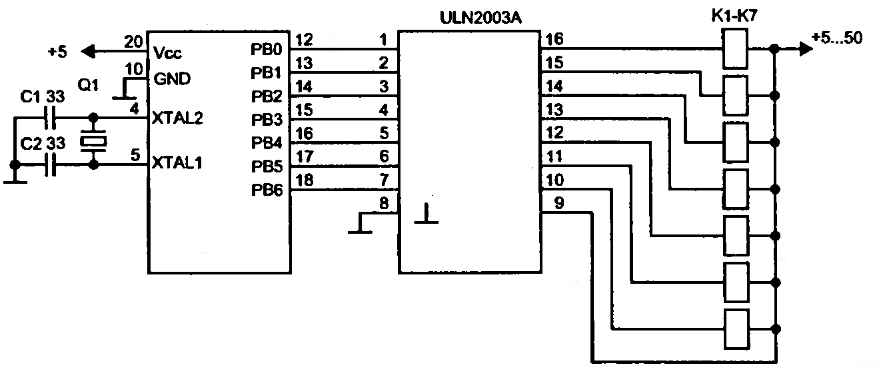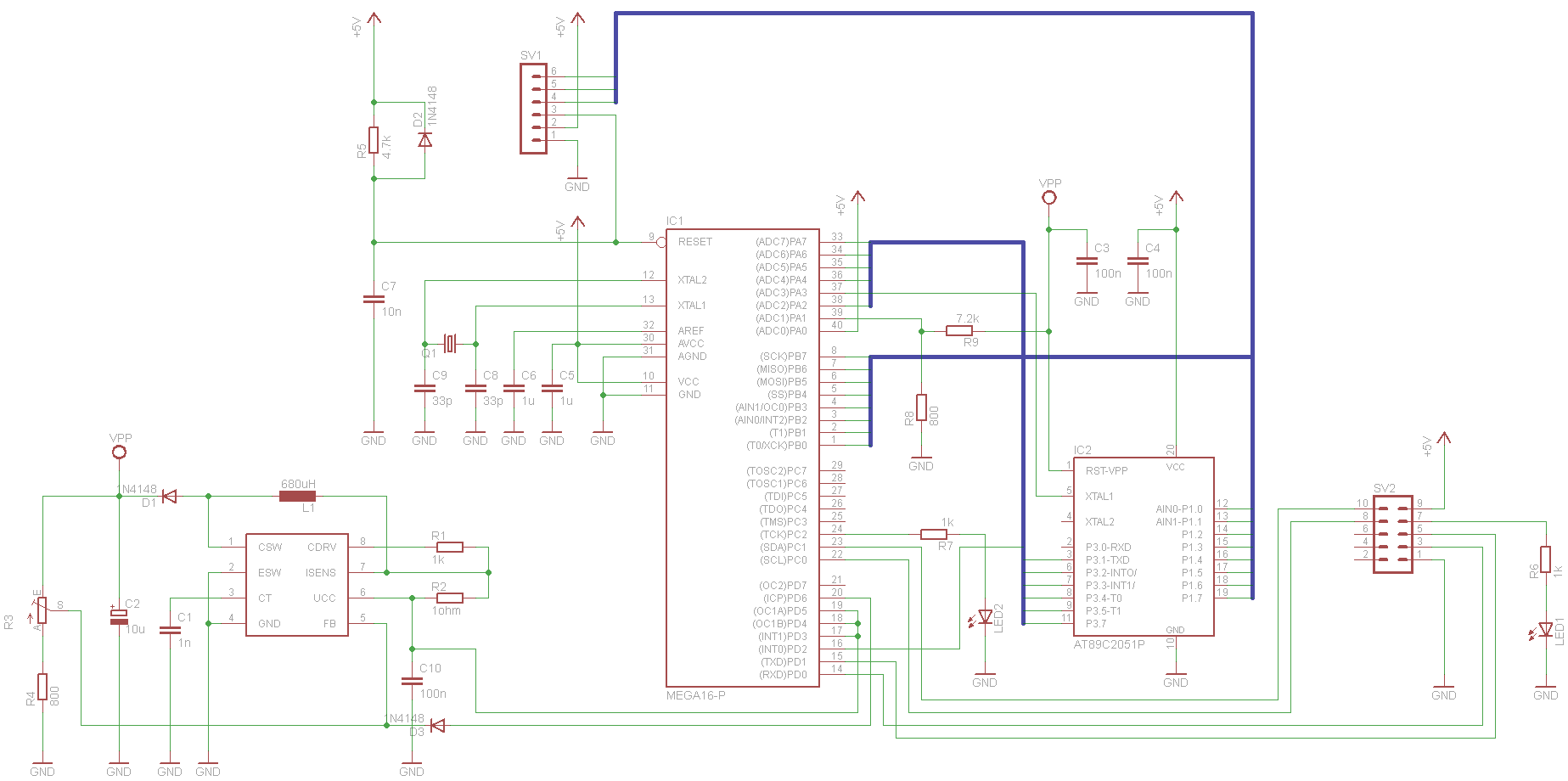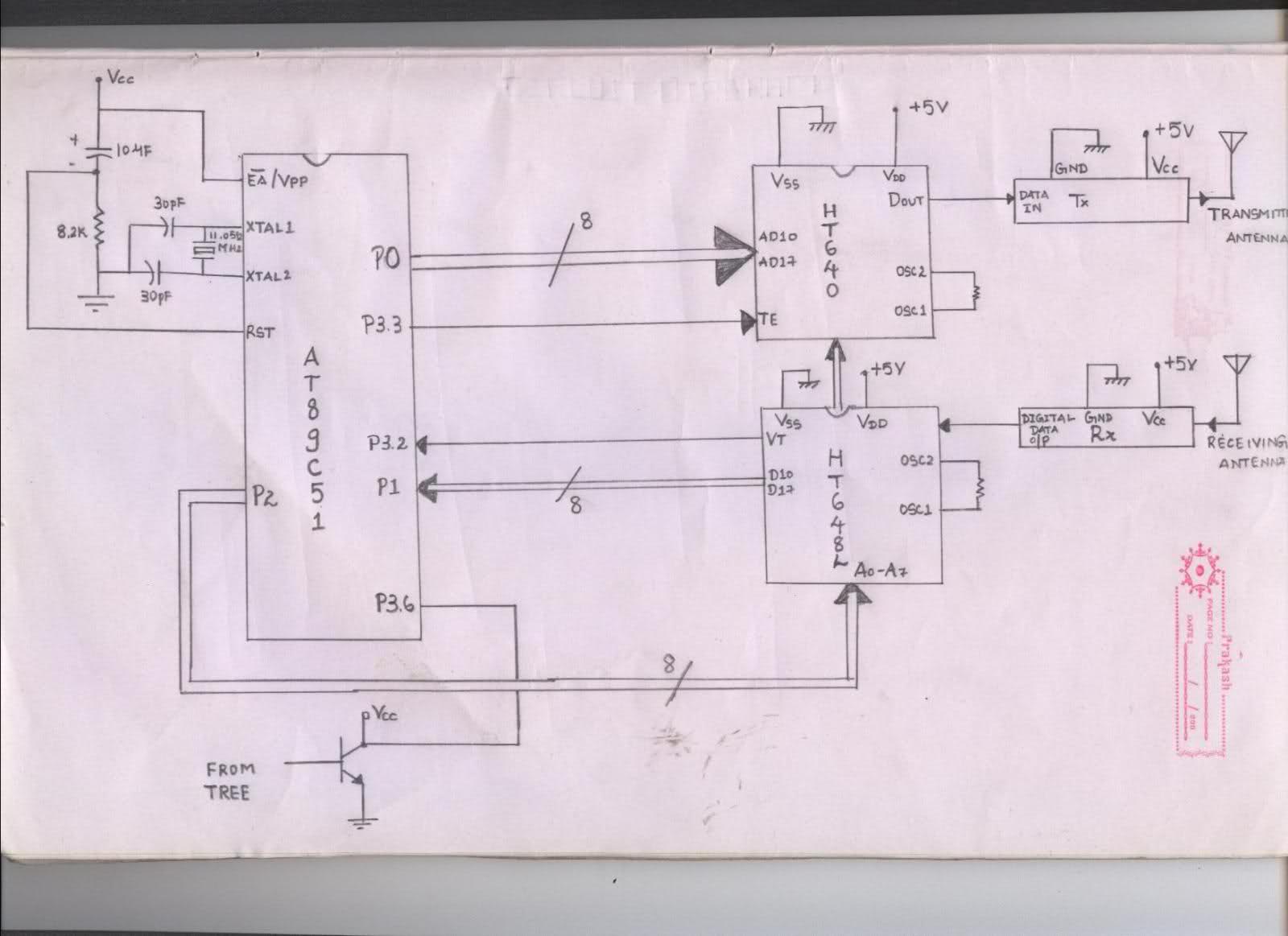
lf352 Programming the AVR microcontroller with GCC libc 1.0.4

The AVR 8-Bit RISC microcontroller from Atmel is a widely used microcontroller. This microcontroller integrates EEPROM, RAM, an Analog to Digital converter, numerous digital input and output lines, timers, UART for RS-232 communication, and various other features. An article was previously written in March 2002 covering this subject. Since then, significant changes have occurred in the avr-libc development, and the AT90S4433 microcontroller utilized in 2002 is no longer produced by Atmel. This serves as an update to the March 2002 article, now focusing on libc-1.0.4 and the ATmega8 microcontroller. Interest in microcontroller programming surged after the initial article in 2002; however, the initial setup of the development environment remains a challenging task. If issues arise during this process, pinpointing the cause can be difficult. Potential problems may include incorrect programmer cable connections, faulty circuits, improper installations, disabled parallel ports in BIOS, or incorrectly compiled kernel modules for ppdev. To simplify entry into the world of microcontrollers, tuxgraphics.org offers a bootable CD that includes a manual and programmer hardware. Users can boot from this CD, enabling immediate functionality without software installation or modifications to the local computer. This CD is particularly useful as hardware often outlasts numerous kernel and software updates on PCs. For later updates to microcontroller software, booting from the CD ensures the development environment remains operational. Independent of this CD, the installation of the GCC AVR development environment will be explained in subsequent sections. Those with the tuxgraphics CD should proceed to the chapter titled "A Small Test Project." Programs will be installed in the directory /usr/local/avr to maintain separation from the standard Linux C compiler. The binutils package provides essential low-level utilities for building object files, including an AVR assembler (avr-as), linker (avr-ld), library handling tools (avr-ranlib, avr-ar), programs for generating EEPROM-loadable object files (avr-objcopy), disassembler (avr-objdump), and utilities like avr-strip and avr-size. The installation process involves extracting the binutils package, configuring, and compiling it. The uisp programmer for Linux is a highly effective tool that can be utilized directly within a Makefile by adding a "make load" rule for compiling and loading software simultaneously. This circuit can also serve as a basic test environment for more complex hardware, allowing for software testing and the attachment of sensors or measurement instruments. Necessary components are listed in a subsequent table. Although the ATmega8 is a common microcontroller, it may not be available in all local electronic shops, but larger distributors such as those in Germany, France, and Digikey.com (US, CA) typically stock it. Notably, a crystal is not required as the ATmega8 features a built-in oscillator, suitable for applications where precise timing is not critical. However, for projects necessitating accurate measurement or UART/RS-232 interface usage, an external crystal is required. The type of oscillator can be defined via fuse bits, which can be modified using the programmer. By default, the internal 1 MHz oscillator is active.
The AVR 8-Bit RISC microcontroller architecture is designed for efficiency, integrating various essential components that streamline the development of embedded systems. The microcontroller's architecture includes a Harvard architecture with separate instruction and data memories, allowing simultaneous access and enhancing processing speed. The inclusion of EEPROM and RAM facilitates data storage and manipulation, while the built-in Analog to Digital Converter (ADC) allows for analog signal processing, making it suitable for sensor applications.
The digital input and output lines provide flexibility in interfacing with various peripherals, enabling the design of complex systems. The timers incorporated into the microcontroller can be utilized for precise timing operations, pulse-width modulation (PWM), and event counting, which is crucial for real-time applications. The UART for RS-232 communication allows for straightforward serial communication with other devices, making it a versatile choice for many projects.
The GCC AVR development environment is critical for programming the ATmega8 microcontroller. The installation process outlined includes extracting the necessary packages, configuring them for the AVR target, and ensuring they are installed in a dedicated directory to avoid conflicts with other development tools. The use of the uisp programmer simplifies the process of uploading firmware to the microcontroller, allowing for efficient testing and iteration during development.
For projects requiring precise timing or specific communication protocols, external components such as crystals can be integrated into the circuit. The ability to modify fuse bits provides flexibility in selecting the appropriate oscillator configuration, enabling designers to tailor the microcontroller's operation to meet specific project requirements. Overall, the AVR 8-Bit RISC microcontroller offers a robust platform for developing a wide range of embedded applications, supported by a rich ecosystem of development tools and resources.The AVR 8-Bit RISC microcontroller from Atmel is a very common microcontroller. This microcontroller is one chip with EEPROM, Ram, Analog to Digital converter, a lot of digital input and output lines, timers, UART for RS 232 communication and many other things. I wrote already in March 2002 an article about the same subject. A lot of things have c hanged in the avr-libc development and the AT90S4433 microcontroller which I used in 2002 is no longer manufactured by Atmel. This is therefore an update of the March 2002 article. I will use libc-1. 0. 4 and the ATmega8 microcontroller. Many people where interested in microcontroller programming after the article which I wrote in 2002. However this first step to get the development environment up and running is the hardest. If something does not work then you have absolutely no clue where the fault is. Programmer cable wrong Circuit faulty Installation incorrect Parallelport disabled in bios Kernel modules for ppdev compiled wrong There can be a lot of reasons why things don`t work.
To make the entrance to the exciting world of microcontrollers easier shop. tuxgraphics. org offers now a bootable CD with a manual and the programmer hardware. All you need to do then is boot from this CD and everything is up and running. No software installation is required and nothing is modified on your local computer. Even I use such a CD now for a while because the hardware I build often survives several generations of kernels and software installations on my PC. If I want later on to update some microcontroller software then I do not have to worry if the development environment on my Linux PC is still working.
I just boot from the CD and it is up and running. Independent of this CD I will explain the installation of the GCC avr development environment in the following paragraphs. If you have the CD from tuxgraphics then continue with chapter "A small test project". We will install all the programs to /usr/local/avr. This is to keep the program separate from your normal Linux C compiler. Create this directory with the command: The binutils package provides all the low-level utilities needed for building object files.
It includes an AVR assembler (avr-as), linker (avr-ld), library handling tools (avr-ranlib, avr-ar), programs to generate object files loadable to the microcontroller`s EEPROM (avr-objcopy), disassembler (avr-objdump) and utilities such as avr-strip and avr-size. tar jxvf binutils-2. 15. tar. bz2 cd binutils-2. 15/ mkdir obj-avr cd obj-avr. /configure -target=avr -prefix=/usr/local/avr -disable-nls make # as root: make install tar jxvf gcc-core-3.
4. 2. tar. bz2 cd gcc-3. 4. 2 mkdir obj-avr cd obj-avr. /configure -target=avr -prefix=/usr/local/avr -disable-nls -enable-language=c make # as root: make install The uisp programmer for Linux is a very good programmer. It can be used directly from within a Makefile. You just add a "make load" rule and you can compile and load the software in one go. This circuit can also be used as a simple test environment for more complex hardware. You can easily test load software and attach sensors or measurement equipment. You need the parts listed in the table below. Although it is a very common microcontroller it might not be available in every local radio shop but bigger distributors for electronic components like ( (germany), (france), digikey.
com (US, CA), etc. have it in store). You have probably noticed that we do not need a crystal. This is because the ATmega8 has now a build-in oscilator. This oscilator can be used when accurate timing is not an issue. However if you want to build precise measurement equipment or you want to use the UART/RS232 interface then you will need a crystal. Which type of oscilator is used can be defined via fuse bits which you can modify with the programmer.
By default (factory setting) the internal 1Mhz oscilator is active. That is: you do not need to rem 🔗 External reference
The AVR 8-Bit RISC microcontroller architecture is designed for efficiency, integrating various essential components that streamline the development of embedded systems. The microcontroller's architecture includes a Harvard architecture with separate instruction and data memories, allowing simultaneous access and enhancing processing speed. The inclusion of EEPROM and RAM facilitates data storage and manipulation, while the built-in Analog to Digital Converter (ADC) allows for analog signal processing, making it suitable for sensor applications.
The digital input and output lines provide flexibility in interfacing with various peripherals, enabling the design of complex systems. The timers incorporated into the microcontroller can be utilized for precise timing operations, pulse-width modulation (PWM), and event counting, which is crucial for real-time applications. The UART for RS-232 communication allows for straightforward serial communication with other devices, making it a versatile choice for many projects.
The GCC AVR development environment is critical for programming the ATmega8 microcontroller. The installation process outlined includes extracting the necessary packages, configuring them for the AVR target, and ensuring they are installed in a dedicated directory to avoid conflicts with other development tools. The use of the uisp programmer simplifies the process of uploading firmware to the microcontroller, allowing for efficient testing and iteration during development.
For projects requiring precise timing or specific communication protocols, external components such as crystals can be integrated into the circuit. The ability to modify fuse bits provides flexibility in selecting the appropriate oscillator configuration, enabling designers to tailor the microcontroller's operation to meet specific project requirements. Overall, the AVR 8-Bit RISC microcontroller offers a robust platform for developing a wide range of embedded applications, supported by a rich ecosystem of development tools and resources.The AVR 8-Bit RISC microcontroller from Atmel is a very common microcontroller. This microcontroller is one chip with EEPROM, Ram, Analog to Digital converter, a lot of digital input and output lines, timers, UART for RS 232 communication and many other things. I wrote already in March 2002 an article about the same subject. A lot of things have c hanged in the avr-libc development and the AT90S4433 microcontroller which I used in 2002 is no longer manufactured by Atmel. This is therefore an update of the March 2002 article. I will use libc-1. 0. 4 and the ATmega8 microcontroller. Many people where interested in microcontroller programming after the article which I wrote in 2002. However this first step to get the development environment up and running is the hardest. If something does not work then you have absolutely no clue where the fault is. Programmer cable wrong Circuit faulty Installation incorrect Parallelport disabled in bios Kernel modules for ppdev compiled wrong There can be a lot of reasons why things don`t work.
To make the entrance to the exciting world of microcontrollers easier shop. tuxgraphics. org offers now a bootable CD with a manual and the programmer hardware. All you need to do then is boot from this CD and everything is up and running. No software installation is required and nothing is modified on your local computer. Even I use such a CD now for a while because the hardware I build often survives several generations of kernels and software installations on my PC. If I want later on to update some microcontroller software then I do not have to worry if the development environment on my Linux PC is still working.
I just boot from the CD and it is up and running. Independent of this CD I will explain the installation of the GCC avr development environment in the following paragraphs. If you have the CD from tuxgraphics then continue with chapter "A small test project". We will install all the programs to /usr/local/avr. This is to keep the program separate from your normal Linux C compiler. Create this directory with the command: The binutils package provides all the low-level utilities needed for building object files.
It includes an AVR assembler (avr-as), linker (avr-ld), library handling tools (avr-ranlib, avr-ar), programs to generate object files loadable to the microcontroller`s EEPROM (avr-objcopy), disassembler (avr-objdump) and utilities such as avr-strip and avr-size. tar jxvf binutils-2. 15. tar. bz2 cd binutils-2. 15/ mkdir obj-avr cd obj-avr. /configure -target=avr -prefix=/usr/local/avr -disable-nls make # as root: make install tar jxvf gcc-core-3.
4. 2. tar. bz2 cd gcc-3. 4. 2 mkdir obj-avr cd obj-avr. /configure -target=avr -prefix=/usr/local/avr -disable-nls -enable-language=c make # as root: make install The uisp programmer for Linux is a very good programmer. It can be used directly from within a Makefile. You just add a "make load" rule and you can compile and load the software in one go. This circuit can also be used as a simple test environment for more complex hardware. You can easily test load software and attach sensors or measurement equipment. You need the parts listed in the table below. Although it is a very common microcontroller it might not be available in every local radio shop but bigger distributors for electronic components like ( (germany), (france), digikey.
com (US, CA), etc. have it in store). You have probably noticed that we do not need a crystal. This is because the ATmega8 has now a build-in oscilator. This oscilator can be used when accurate timing is not an issue. However if you want to build precise measurement equipment or you want to use the UART/RS232 interface then you will need a crystal. Which type of oscilator is used can be defined via fuse bits which you can modify with the programmer.
By default (factory setting) the internal 1Mhz oscilator is active. That is: you do not need to rem 🔗 External reference





